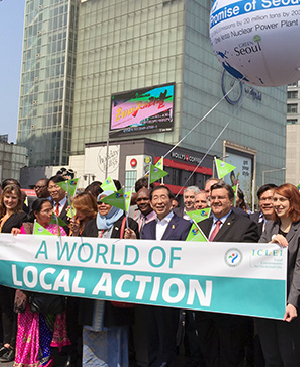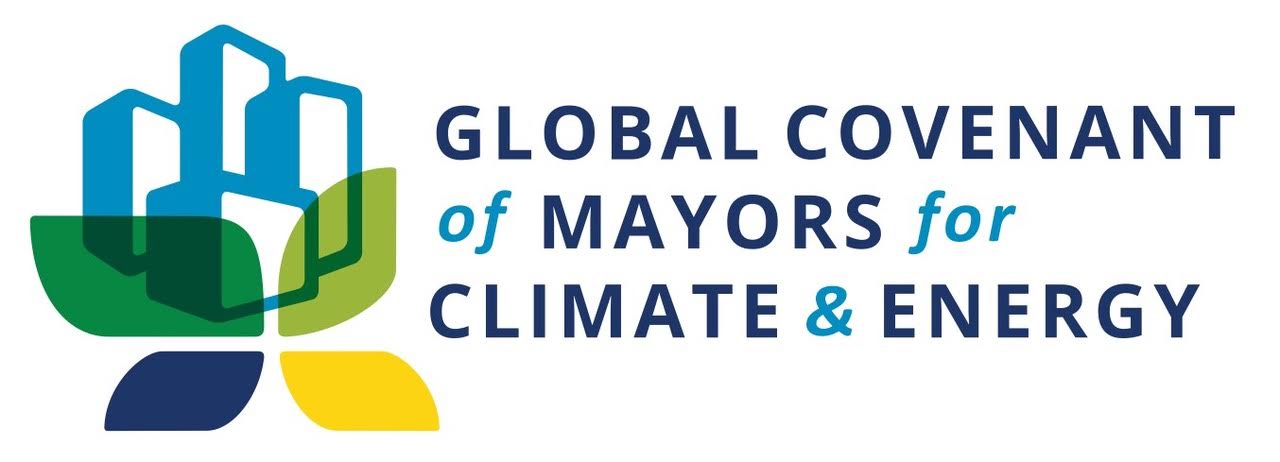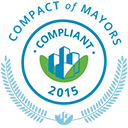- Home
- Reporting entities
- City of Oakland, CA
City of Oakland, CA
United States Mayor: Elizabeth Schaaf-
Population 419267

-
Area 144.0km 2
-
GDP 24 BillionUSD
-
Targets by N/A N/Aemission
Targets by City of Oakland, CA
There are no targets yet
- Start year: 2022
- Type: Climate mitigation plan
- Start year: 2022
- Type: Climate adaptation /resilience plan
- Start year:
- Type: Technical/Infrastructure investment
- Status: Completed
The City has completed energy upgrades to: the Police Administration Building’s lighting and HVAC equipment; the City Administration Building’s automated HVAC controls; Data Center servers; and lighting systems at the Municipal Services Center, Dalziel Garage and 20 community ball fields.
Read More Read Less- Buildings

- Start year:
- Type: Technical/Infrastructure investment
- Status: Completed
The City has replaced the inefficient lightbulbs of 32,000 streetlights to LEDs.
Read More Read Less- Facilities

- Start year:
- Type: Technical/Infrastructure investment
- Status: In operation
The City plans to add three electric vehicles to its fleet in 2013 thanks to a grant from the Metropolitan Transportation Commission. The City is planning to add new electric vehicle charging infrastructure at one downtown public parking garage and at the City’s Municipal Services Center in 2013.
Read More Read Less- Transport

- Start year:
- Type: Policy/Strategies/Action Plans
- Status: In operation
The City has begun a process to develop a shared vision, criteria and process for future transportation planning and project prioritization, which represents one portion of this project.
Read More Read Less- Transport

- Start year:
- Type: Assessment/Research
- Status: Completed
Identifying Priority Development Areas in Oakland will help the City secure resources for local transportation and infrastructure improvements. PDA designation is awarded through the FOCUS Program (a regional development and conservation strategy), led by four regional agencies: the Association of Bay Area Governments (ABAG), Metropolitan Transportation Commission (MTC), Bay Area Air Quality Management District (BAAQMD) and the Bay Conservation and Development Commission (BCDC). The FOCUS Program and the PDA designation have the primary goal of encouraging growth near transit and in the existing communities that surround transit by enhancing existing neighborhoods and providing good housing and transportation choices for all residents. This includes an explicit focus on promoting housing that will be affordable to low-income residents and attempts to minimize the displacement of existing residents. The City should continue to plan for and approve new development in conformance with current CEQA guidelines.
Designated PDAs will become eligible to receive not only planning and technical assistance but capital funding from various sources including the Station Area Planning Grant Program, the Regional Transportation Plan (Transportation 2035), the Transportation for Livable Communities Program, Environmental Justice grants, Green Infill - Clean Storm water grants, the Proposition 1C: Transit Oriented Development Housing Program and Infill Infrastructure Grant Program, the Transportation Fund for Clean Air grant program, and other State and regional programs.
City Council has approved an application for designation. Follow-on grant applications will need to be focused on infrastructure, transportation, and housing for a range of income levels for transit-oriented development areas and corridors.
Achieving PDA designation of previously designated transit-oriented areas will be accomplished under existing Resources. An additional 0.25 FTE for a grant writing professional would augment Oakland’s capacity to apply for, and chances of receiving, more above-mentioned future funding.
- Transport

- Start year:
- Type: Education/Awareness Raising
- Status: In operation
Planning staff is currently preparing a number of specific plans that will address these issues, including for the Lake Merritt BART Station, Broadway/Valdez District, West Oakland, Coliseum City, and Central Estuary areas. In addition, since approval of BRT, staff has been working with AC Transit to establish design requirements for the permanent stations and streetscapes along the route. These station locations are expected to spur additional TOD, beyond the BART station development that is already occurring. Also, Planning staff is currently preparing design guidelines for the city’s mixed-use corridors, with completion anticipated in 2013.
Read More Read Less- Transport

- Start year:
- Type: Assessment/Research
- Status: Completed
Oakland Shines performed 600 building audits and 200 energy upgrade projects, resulting in annual energy savings of 4.5 million kWh of electricity and 55,000 therms of natural gas, saving Oakland businesses nearly $600,000 per year in energy costs.
Read More Read Less- Buildings

- Start year:
- Type: Policy/Strategies/Action Plans
- Status: Completed
The City expanded weatherization program delivery to single family and multi-family homes using time-limited ARRA funds, including improving energy efficiency in 862 Oakland homes, including 780 affordable housing units in 13 multi-family properties in Oakland.
Read More Read Less- Buildings

- Start year:
- Type: Technical/Infrastructure investment
- Status: In operation
City has partnered with local organizations in the Oakland Climate Action Coalition to recruit participants for a workshop on advancing energy efficiency in multi-family housing, and in evaluating projected local climate impacts, vulnerabilities and adaptation strategies.
Read More Read Less- Other Emissions

- Start year:
- Type: Policy/Strategies/Action Plans
- Status:
The City’s Office of Economic Development is supporting recovery and redistribution of computers with the Oakland Technology Exchange in West Oakland, and the expansion efforts of St. Vincent de Paul of Alameda County at its East Oakland construction materials reuse facility, which houses both the Habitat for Humanity ReStore and The Reuse People, both of which recover and resell construction materials for reuse.
Read More Read Less- Waste

- Start year:
- Type: Policy/Strategies/Action Plans
- Status: In operation
The City has released an RFP for delivery of zero waste services in Oakland that includes a restructuring of solid waste management system to help achieve zero waste goals.
Read More Read Less- Waste

- Start year:
- Type: Policy/Strategies/Action Plans
- Status: Completed
The City launched the Weatherization and Energy Retrofit Loan Program which has provided energy retrofits for 20 single-family homes to date.
Read More Read Less- Buildings

- Start year:
- Type: Technical/Infrastructure investment
- Status: Completed
The City partnered with the San Francisco Mayor’s Office of Housing, Enterprise Community Loan Fund, and the Low Income Investment Fund to develop protocols for predicting energy savings in multi-family properties and successfully advocated for policy changes that allow state and federal energy efficiency funding to better serve low-income residents in multi-family housing. The pilot served 98 affordable family housing units in downtown Oakland.
Read More Read Less- Buildings

- Start year:
- Type: Policy/Strategies/Action Plans
- Status: Completed
Launch and sustain a downtown free shuttle to increase transit use in the downtown area. Explore options to expand the shuttle up the Broadway corridor.
The City launched a new downtown shuttle serving the Broadway corridor from Jack London Square to the Uptown area. Rides on the shuttle are free to the public. The shuttle is projected to create a net reduction in GHG emissions by reducing the need for private automobile trips. The shuttle will also benefit downtown merchants.
The launch and initial operating phase of the shuttle is supported by a grant from the Bay Area Air Quality Management District. Funding is in place to support the operation of the shuttle for a two-year period. During this time, the City will work to develop a long-term funding strategy to sustain the shuttle beyond the grant period, including development of a “fair share” methodology for assigning a portion of the costs to new development.
Existing staff resources are sufficient to support the launch of the shuttle. Additional resources may be needed to perform urban economic analysis, outreach and strategy development to create an ongoing sustainable funding stream beyond the grant period.
- Transport

- Start year:
- Type: Fiscal / Financial mechanism
- Status: In operation
The City has received a grant of $531,000 from the Safe Routes to Transit program to build a bike station at 19th Street BART and is working with BART to find a location and establish an operating agreement.
Read More Read Less- Transport

- Start year:
- Type: Technical/Infrastructure investment
- Status: In operation
The City has recently retired a number of older vehicles and replaced them with more fuel efficient vehicles. The City is in the process of replacing Geo Tracker SUVs with the Toyota Prius C for parking enforcement. Five CNG street sweepers will replace six existing diesel sweepers, and one CNG refuse packer will replace a diesel version.
Read More Read Less- Transport

- Start year:
- Type: Technical/Infrastructure investment
- Status: In operation
The City has reduced the size of its vehicle fleet by 108 units over the last two years by removing generally older, less efficient vehicles.
Read More Read Less- Transport

- Start year:
- Type: Policy/Strategies/Action Plans
- Status: In operation
As a member of the Bay Area Electric Vehicle Strategic Council, the City is partnering with other Bay Area cities, regional agencies and private sector partners to develop an electric vehicle infrastructure plan to make EV charging infrastructure widely available throughout the Bay Area. Regional agencies were awarded more than $500,000 for this work in 2011.
Read More Read Less- Transport

- Start year:
- Type: Fiscal / Financial mechanism
- Status: In operation
City staff participated in the planning and launch of Energy Upgrade California, which provides assistance and rebates to Oakland homeowners making home energy upgrades.
Read More Read Less- Buildings

- Start year:
- Type: Regulatory
- Status: Completed
The City adopted a Green Building Ordinance for residential and commercial private development apply to new construction and significant renovation projects in 2010.
By adopting a green building ordinance for private development, Oakland has the opportunity to ensure that new construction and major renovation projects are constructed in a manner that reduces future operational energy and water use, transportation and waste disposal impacts, and associated GHG emissions. Such a policy can build from the City’s existing Civic Green Building Ordinance and adopted green building standards for new affordable housing developments receiving funds through the annual housing Notice of Funding Availability.
Development of a draft green building ordinance for private development has been underway for more than a year. A number of workshops have been held to gather public and targeted industry input on the proposed ordinance, including affected building types, thresholds and requirements, and implementation process. Existing staff resources continue to be sufficient for development of the ordinance, though implementation may require additional training for select City staff, as well as the creation of new compliance guidance documents and process adjustments.
Once the ordinance is adopted, implementation tasks will include: updates to related content on the City’s website (e.g., the ordinance, FAQs, links to helpful information); updates and maintenance of application forms and process documents; creation of a how-to manual for the public and training manual for City personnel; and development of compliance monitoring and enforcement procedures. All building and planning staff will need to receive additional training to supplement green building code training provided recently with ARRA funding support. Building inspectors will also receive training tailored for energy “raters” to maximize understanding of how to work with third-party raters. Refresher courses are expected to be available from third-party organizations (e.g., StopWaste.Org) at no cost to the City.
- Buildings

- Start year:
- Type: Policy/Strategies/Action Plans
- Status: In operation
The City is collaborating with the Cities of Berkeley and Emeryville to develop recommendations for policies and programs to advance energy savings in multi-family and renter-occupied housing.
Read More Read Less- Buildings

- Start year:
- Type: Regulatory
- Status: In operation
Planning staff is currently updating the City’s requirements for Transportation Demand Management (TDM) programs to emphasize alternative modes of travel for major new development projects.
Read More Read Less- Transport

- Start year:
- Type: Regulatory
- Status: In operation
The City added digital control procedure documentation for upgraded lighting and/or HVAC controls in the Dalziel Garage, Police Administration Building, and City Administration Building. New operating procedures are under development for utility cost management and energy efficiency modifications to City facilities.
Read More Read Less- Buildings

- Start year:
- Type: Fiscal / Financial mechanism
- Status: In operation
The City implemented a record setting 17 miles of bikeway projects in 2011 to expand and improve the network, and is moving forward with several new major projects including along 27th St, East 12th St, the Broadway Corridor, MacArthur Blvd, and elsewhere.
Read More Read Less- Transport

- Start year:
- Type: Technical/Infrastructure investment
- Status: In operation
Oakland households purchased over 1,000 rain barrels through the Oakland Watershed & Stormwater Management Rain Barrel Program by mid 2011, providing the equivalent of 57,000 gallons of rainwater storage.
Read More Read Less
- Start year:
- Type: Assessment/Research
- Status: In operation
The City is participating in a sub-regional climate impacts and vulnerability assessment led by the Bay Conservation and Development Commission focusing on the impacts of projected sea level rise and flooding. This project will also develop adaptation recommendations in a later phase.
Read More Read LessThe City of Oakland, CA has reported 2 Community emission inventories, since 2005. In its latest inventory, compiled in 2013, the Transport, Stationary energy and Waste management are identified as key emission sources.
Mayor Elizabeth SchaafCity of Oakland, CA, United States



